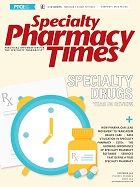Publication
Article
Specialty Pharmacy Times
How Pharma Can Lead the Movement to Transform Health Care
Health care lacks the interoperability needed to utilize all of the data available to influence care decisions and improve outcomes.
The adoption of technology in health care is evident via the implementation and utilization of electronic health records (EHRs) digital medical devices and e-prescribing.
However, health care lacks the interoperability needed to utilize all of the data available to influence care decisions and improve outcomes. Every practitioner and health care organization is already leveraging technology in some form, but aligning solutions is complicated in a fragmented care system operated by disparate stakeholders with competing interests.
Mobile devices and wearable technology present huge potential, yet only 2% of the 165,000 apps available in major app stores have the capability to integrate with EHRs. Although doctors have an overwhelming interest in utilizing technology to improve positive outcomes, patient data often end up in silos, causing patient progress to become exceedingly difficult.
Success for pharma goes far beyond getting good drugs to market, as it must also focus on proving the drugs’ efficacy. To improve health outcomes, lower costs, and impact consumer experience, today’s health care landscape could benefit from enhanced connectivity between patients and their payers, providers, and pharmacists.
This would enable personalized medicine, integrated care plans, and better drug delivery systems linked with the right people, processes, and technologies to empower all stakeholders. Pharmaceutical companies are in an incredible position to build a network of health care stakeholders that combine technology and support services to widen access to drugs, build drug adherence, and track patient outcomes.
Now with the promise of technology, the movement to networked health could transform US health care, with a pharma-led value chain at the forefront. Wearables, bio-sensor technology and other innovative digital devices are bringing increased insight to patient conditions and allowing continuous remote monitoring. These advances can impact clinical pathways to lower the probability of negative patient outcomes, thereby vastly improving the patient journey. Wearables provide a trove of useful data on patient conditions.
However, historically, they have only been utilized for very specific conditions. Broad consumer acceptance of wearables, their increasingly smaller footprint, and greater knowledge of their relationship to health monitoring will accelerate widespread medical utilization and consumption in real time. This can help identify medical conditions sooner, better manage risk factors, educate members about services, and direct members to the right health care provider.
Pharma can lead an integrated wellness program, starting with reimbursement guidance on patient support services. Access to expert advice on reimbursement ensures both the patient and doctor are aware of the requirements and feasibility of prescribed technology under an insurance plan. Medical information programs would inform device suitability. Data warehouses would expand to act as a data repository for device data.
Here’s what patient care would look like under the networked health approach: An Alzheimer’s patient has been prescribed a drug by his or her physician to help prevent memory loss. Alongside medication and services, patients can also be prescribed a pair of Google Glasses that use scene-learning technology to prompt them when they forget a routine task, such as turning off the oven or locking the door when the individual leaves the house.
This feedback helps patients use their memory more productively and can actually reduce the rate of memory loss. The data would be sent to care providers so they can accurately monitor disease progression, assess treatment efficacy, and support patient needs in real time. New data points could also be uncovered.
Meanwhile, this wearable device arms pharmaceutical companies with data to help them better understand how drugs are performing, thus the companies can continue improving the efficacy of their drugs and support their health economics and outcomes research. Health care, as a whole, will only be as great as the sum of its parts.
For providers, it is about efficiently allocating time and resources, while affording patients the best possible chances of getting well. This means prescribing the right medication and treatment plans based on evidence and leveraging technology to increase the likelihood of prescription adherence.
For payers, it is about gaining visibility into treatment progress and ensuring that the treatment they are paying for is delivering the best value and outcome for the patient. For pharmaceutical companies, it is about understanding how patients respond to drug treatments over time so they can continuously innovate and deliver new and more effective products that continue to improve health outcomes.
Several imperatives emerge:
- Partnering or investing in digitally-enabled services around products
- Inspiring and educating prospective network participants
- Bundling packages of reimbursable services and digital products
- Adopting an innovative spirit Intelligent guidance of patients is already happening and is advancing.
This approach has huge potential to be a catalyst for wide-ranging change. A new connected health care ecosystem that transforms patient outcomes could emerge, with the pharmaceutical product at the center.







